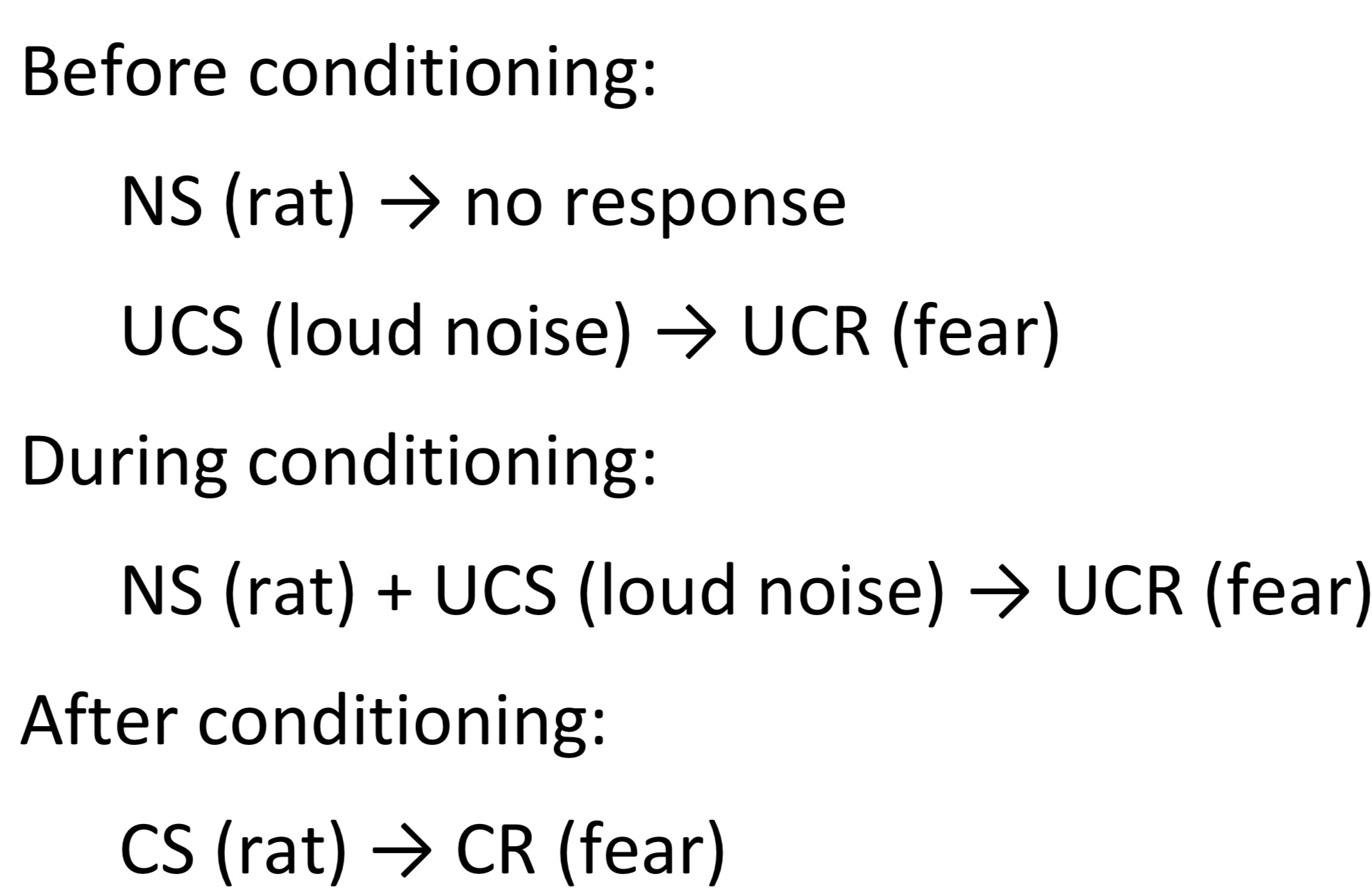Explaing phobias - behaviuorist approach
1/13
Earn XP
Description and Tags
Name | Mastery | Learn | Test | Matching | Spaced |
|---|
No study sessions yet.
14 Terms
How can the behaviourist approach explain phobias?
Emphasises role of learning behaviours from the environment focuses on explaining behaviourist aspects of phobia rather than cognitive or emotional.
Who proposed the two-process model?
Mowrer 1947
What did Mowrer 1947 propose?
A two-process model to explain how phobias are learned through classical conditioning and maintained through operant conditioning
Who as the experimenters form the case study of Little Albert?
Watson and Rayner 1920
What was the aim of Little Albert case study?
To investigate whether a phobia could be learned through classical conditioning in humans
What was the method of Little Albert study?
P was a 9-month-old child called ‘Little Albert’
Before the experiment, Watson and Radnor noted that Albert showed no fear response to various objects including a rat
To test if they could teach Albert to be afraid of the rat the wold bang a large metal bar with a hammer behind Albert every time the rat was presented (repeated several times)
What was the results and conclusions of the Little Albert study?
Experiment demonstrated that a fear response could be induced through classical conditioning as eventually Albert displayed a fear response to the rat suggesting t had become a conditioned stimulus. Albert showed a fear response towards similar objects e.g cotton wool

How do we maintain phobias
Operant conditioning: as phobias, are long term and according to Mowrer our phobias are maintained by negative reinforcement = avoidance
What is a strength of the behaviourist explanation of phobias?
Real life applications: Exposure therapies to treat phobias expose the individual to the phobic stimulus
What is some evidence to support the real life applications of the behaviourist explanation of phobias?
- Therapies like flooding and systematic desensitisation prevent avoidance behaviours from being reinforced
- Allows individual to learn there is no reason to fear the phobic stimulus, and reduces the phobia
What is a limitation of the behaviourist explanation of phobias?
Ignores cognitive aspects: Behaviourist approaches like the two process model focus on explaining learned behaviours such as avoidance of phobic stimulus
What is some evidence to support the behaviourist explanation of phobias ignores cognitive aspects?
- But phobias are not just avoidance responses
- There are cognitive components such as irrational beliefs, cognitive distortions and selective attention
What is an alternative explanation to the behaviourist explanation of phobias?
Instead, certain phobias might be better explained by evolutionary theories.
What is some evidence to support a alternative explanation of phobias?
- Not all phobias require negative experiences to develop.
- Some might be due to biological preparedness = phobic response to stimuli that threatened survival of evolutionary ancestors e.g. animals like snakes